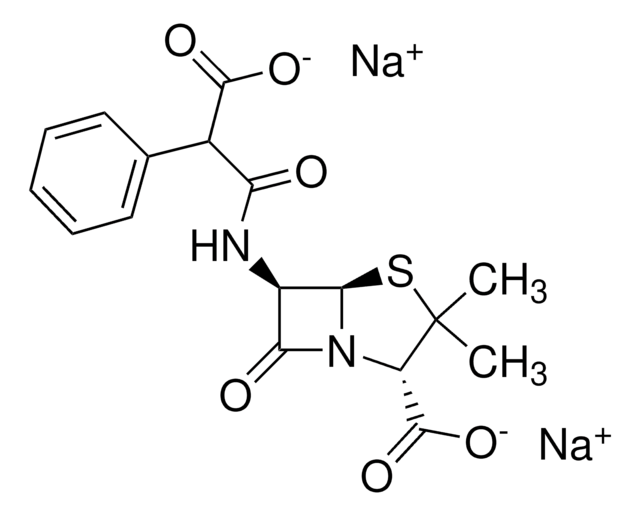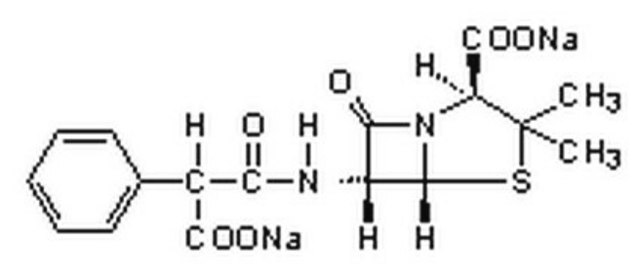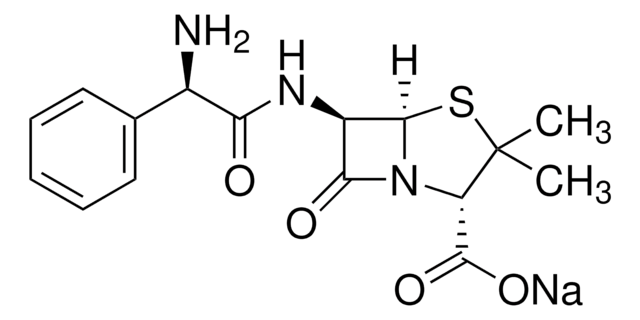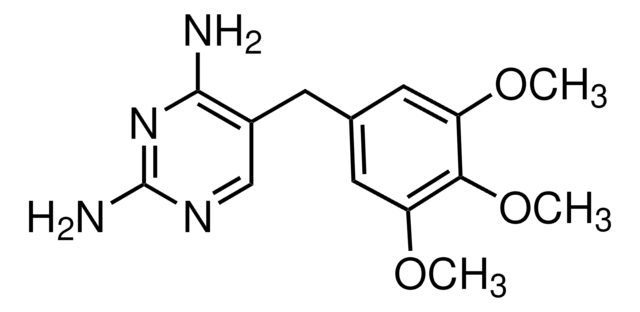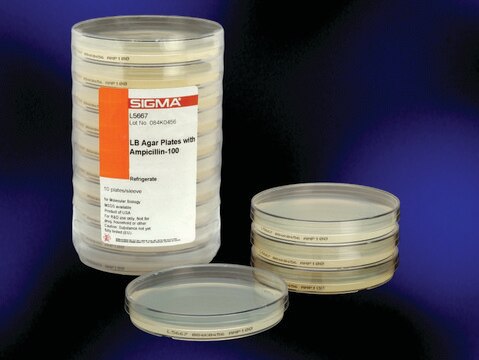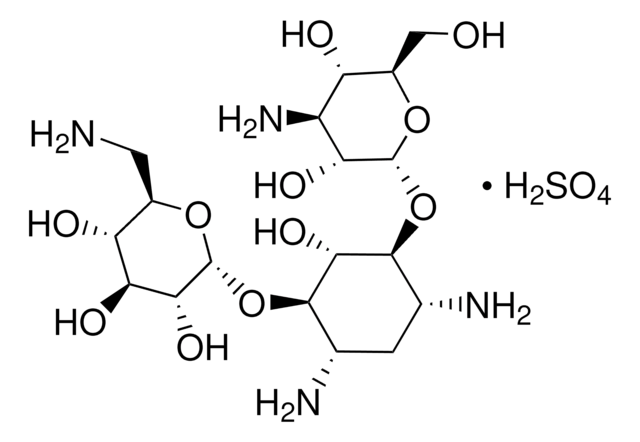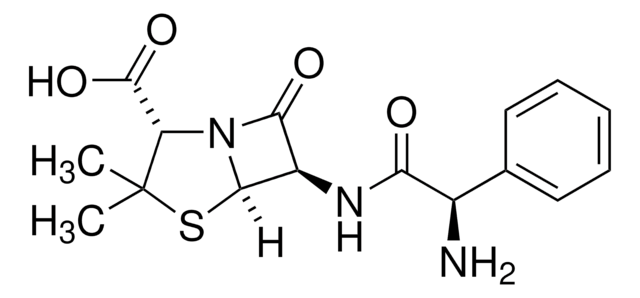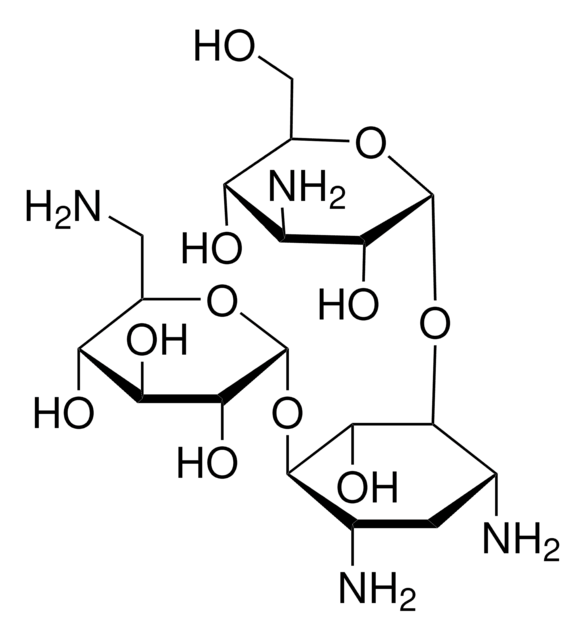C1613
Carbenicillin
Ready Made Solution, 100 mg/mL in ethanol/water, 0.2 μm filtered
Synonym(s):
α-Carboxybenzylpenicillin solution
About This Item
Recommended Products
Quality Level
sterility
0.2 μm filtered
form
liquid
concentration
100 mg/mL in ethanol/water
solubility
H2O: 100 mg/mL
ethanol: 100 mg/mL
suitability
suitable for testing specifications (Bacteriostatic (cell type) E. Coli DH5a, result: pass)
antibiotic activity spectrum
Gram-negative bacteria
Gram-positive bacteria
mode of action
cell wall synthesis | interferes
shipped in
wet ice
storage temp.
−20°C
SMILES string
CC1(C)S[C@@H]2[C@H](NC(=O)C(C(O)=O)c3ccccc3)C(=O)N2[C@H]1C(O)=O
InChI
1S/C17H18N2O6S/c1-17(2)11(16(24)25)19-13(21)10(14(19)26-17)18-12(20)9(15(22)23)8-6-4-3-5-7-8/h3-7,9-11,14H,1-2H3,(H,18,20)(H,22,23)(H,24,25)/t9?,10-,11+,14-/m1/s1
InChI key
FPPNZSSZRUTDAP-UWFZAAFLSA-N
Looking for similar products? Visit Product Comparison Guide
Related Categories
General description
Application
Biochem/physiol Actions
Other Notes
signalword
Danger
hcodes
Hazard Classifications
Flam. Liq. 3 - Resp. Sens. 1 - Skin Sens. 1
Storage Class
3 - Flammable liquids
wgk_germany
WGK 2
flash_point_f
104.0 °F - closed cup
flash_point_c
40 °C - closed cup
ppe
Eyeshields, Faceshields, Gloves, type ABEK (EN14387) respirator filter
Certificates of Analysis (COA)
Search for Certificates of Analysis (COA) by entering the products Lot/Batch Number. Lot and Batch Numbers can be found on a product’s label following the words ‘Lot’ or ‘Batch’.
Already Own This Product?
Find documentation for the products that you have recently purchased in the Document Library.
Customers Also Viewed
Our team of scientists has experience in all areas of research including Life Science, Material Science, Chemical Synthesis, Chromatography, Analytical and many others.
Contact Technical Service